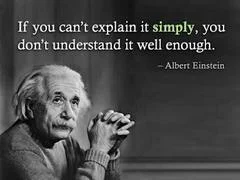There are many forms and, I'm sure, many definitions of minimalism. There is minimalism in visual art, minimalism in lifestyle, minimalism in architecture...you get the idea. While the margins of this term may be up for debate, the core principle they all seem to share is the use of only what is necessary. Where they seem to differ, at least in my opinion, is their perception of what is necessary. This distinction is probably true for every strata of these different categories and its often left to the user or implementor to determine what is right for them. For me, that is the process of dissolving information to its simplest form and conveying only what is necessary.
"What do you call this?!"
After years of being asked to describe my painting style and having tried on every word or phrase I could think of, none of them seemed quite right. Every title or descriptor left something unsaid. People have used pointillism, well that seems logical, but what about the structure I've implemented that is so different from traditional pointillism? I've heard contemporary, of course, but what about all the history that goes into each subject? It was all too specific and too general at the same time, if that's possible. It seemed like it would take so many words to describe it that it had the makings of the worst tagline ever. And even if Einstein's quote isn't always true, I'm sure there are some things that can't be simplified, I still subscribe to the idea of it. Not only did it completely go against the idea of minimalism, but if it took me a dozen words to describe my style, maybe I didn't fully understand it yet.
Minimalism: enter stage left. As with my paintings, this process led me back to my roots in the architecture field. There is so much to be gained from the design process and I've always had such an appreciation for architectural history. That's when I started thinking of the minimalistic movement. It is specific and yet all encompassing for me. It speaks to not only my art, but to my life and to me as a person. For this blog's purposes I'll only go into how it relates to my artwork. To find out the rest of it will cost you coffee.
Does minimalism describe every aspect of my artwork - no. But if I asked you how you feel about your significant other, and you replied "they have brown hair", even though that may be true, it tells me nothing of the whole picture. But if you replied "they're the best!", it tells me nothing of what they look like, but I would have a deeper and more rounded perception of who they are in response to my question. So, in the interest of picking my battles, I'm aiming for the latter.
What is left. Not what is missing.
There is this notion that minimalism means using nothing. Get rid of everything! Empty room. One chair. Voila! Je suis un minimaliste! But it's so much more than that. Minimalism is not a lack of stuff, but the presence of only what is necessary. It's a simplified mass, not a void.
While researching this I found a graphic that said “Minimalism – just another word for sensory deprivation”. And even though the poster was being ironic, there are a lot of people who actually feel that way (which is why it's funny of course) - that it has to be stark and cold. But there are so many questions in response to that sentiment. What if the purpose of the room was sensory deprivation? If so, then brava! If it was not the purpose, then in my opinion it is not minimalism. Historically, minimalism has actually taken into account the human experience of light, air and nature as much as it has white couches and lone chairs. What could be more sensory than our interaction with the natural elements and the invisible qualities of a space?
This gets back to those gray areas I was talking about though, those blurry margins and user specific interpretations. I don't believe that a minimalistic space or painting should do anything more or less than what it is intended to do. If a room is supposed to feel inviting, then you add what is necessary to accomplish that, but no more. If a painting is supposed to be representative of something, I want to use the minimal amount of information you would need to perceive it, but no more. One of the original ideas of the movement was that “no design could be improved upon by taking anything else away”. You have boiled it down to that exact precipice. I try to reach a point in my painting where taking one dot away makes it impossible to see the subject, then I put that dot back in, but no more. That's how I know I'm there.
This graphic sort of sums up that idea. Is the building on the left a simple house? Yes. But do you need anything more than what is on the right to perceive that it is a house?
To me, there is something so beautiful about using only what is required. From a stewardship perspective to an artistic one, it's a challenge that I enjoy. There are so many cultures (Japanese culture played a large role) and of course famous architects that really brought these ideas to the forefront of design. And while I know it's not everyone's style, I hope it helps to better understand mine. Hand painted minimalism.



